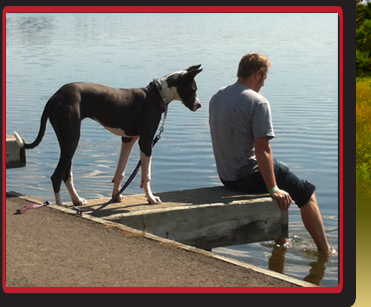Truly an "All-American" dog, the Boston Terrier has been nicknamed "the American Gentleman" because of his dapper appearance, characteristically gentle disposition and suitability as companion and house pet.
Description:
Boston Terriers, also called Boston Bulls, are compact and well-muscled dogs. The body is short with a square appearance. The square-looking head is flat on the top and in proportion to the rest of the body. The deep, wide, short muzzle is in proportion with the head. The nose is black. The stop is well defined. The bite is either even or slightly undershot, giving the muzzle the square look. The large, round, dark eyes are wide-set. The erect ears are small and either cropped or left natural. The limbs are straight and muscular. The legs are set somewhat wide apart and the chest is broad. The neck is slightly arched. The low-set, tapered tail is short and either straight or screw-shaped and is never docked. The short, fine textured coat comes in seal, brindle and white, black and white and some are born brown and white.
Temperament:
The Boston Terrier is gentle, alert, very intelligent, well-mannered and enthusiastic. Without the proper amount of mental and physical exercise it can become rambunctious and a bit high strung. They are very sensitive to the tone of one's voice. Boston's like to learn and therefore are not difficult to train. Their intelligence ensures they pick things up quickly. Some owners have reported that their dogs are good watchdogs, barking only when necessary, while other owners have reported their female Boston Terriers do not bark at the door at all. Most reliable with children, especially good with elderly people and very friendly with strangers, the Boston Terrier is playful, very affectionate and likes to be part of the family. Very popular in the United States, due above all to its excellent character, they generally get along well with non-
canine pets.
Height:
Height: 15 - 17 inches
Weight:
Weight: 10 - 25 pounds
Health Problems:
Prone to eye problems, such as juvenile cataracts, late-onset cataracts, entropion, distichiasis, glaucoma, corneal dystrophy, corneal ulcers, cherry eye, dry eyes (Keratitis Sicca). The Boston Terrier’s prominent eyes are prone to injury. Also, deafness, patellar luxation, heart and skin tumors, including mast cell tumors. These short-faced dogs may have breathing difficulties when stressed by exertion in hot or cold weather and can overheat if they are pushed too hard. They may also snore or drool. Whelping is often difficult as the pelvis is narrow; the large-headed pups are often delivered by cesarean section.
Living Conditions:
Boston Terriers are good for apartment as well as country living. They are relatively inactive indoors and do okay without a yard. This breed is sensitive to weather extremes.
Exercise:
A long daily walk and sessions of free play in a fenced-in yard are all the Boston Terrier needs to stay in shape. They are fairly lightweight and can easily be carried.
Life Expectancy:
About 15 or more years
Grooming:
The smooth, shorthaired coat is easy to groom. Comb and brush with a firm bristle brush and bathe only when necessary. Wipe the face with a damp cloth every day and clean the prominent eyes carefully. Check both the ears and eyes for grass seeds. Ticks may also lurk in the ears. The nails should be clipped from time to time. This breed is an average shedder and does not have a strong doggie odor.
Orgin:
Bred down in size from pit-fighting dogs of the bull and terrier types, the Boston Terrier originally weighed up to 44 pounds (Olde Boston Bulldogge). It is difficult to believe that these stylish, little dogs were once tough pit-fighters. In fact, their weight classifications were once divided as lightweight, middle and heavyweight. Originating in the city of Boston, Massachusetts, the Boston Terrier is one of the few breeds developed in the USA. The original Boston Terriers were a cross between the English Bulldog and the now extinct English White Terrier. Around 1865, the coachmen employed by the wealthy people of Boston began to interbreed some of the dogs owned by their employers. One of these crosses, between an English White Terrier and an English Bulldog, resulted in a dog named Hooper's Judge. Judge weighed over 30 pounds. He was bred down in size with a smaller female and one of those male pups was bred to yet a smaller female. Their offspring interbred with one or more French Bulldogs, providing the foundation for the Boston Terrier. By 1889 the breed had become sufficiently popular in Boston that fanciers formed the American Bull Terrier Club, but this proposed name was not well liked by Bull Terrier lovers. Nor did they like the breed’s nickname, "roundheads." Shortly after, the breed was named the Boston Terrier after its birthplace. The breed was recognized by the AKC in 1893. It was first shown in Boston in 1870. In the early years the color and markings were not very important but by the 1900s the breed’s distinctive markings and color were written into the standard. Terrier only in name, the Boston Terrier has mellowed from the pit fighting dogs of the past. |





